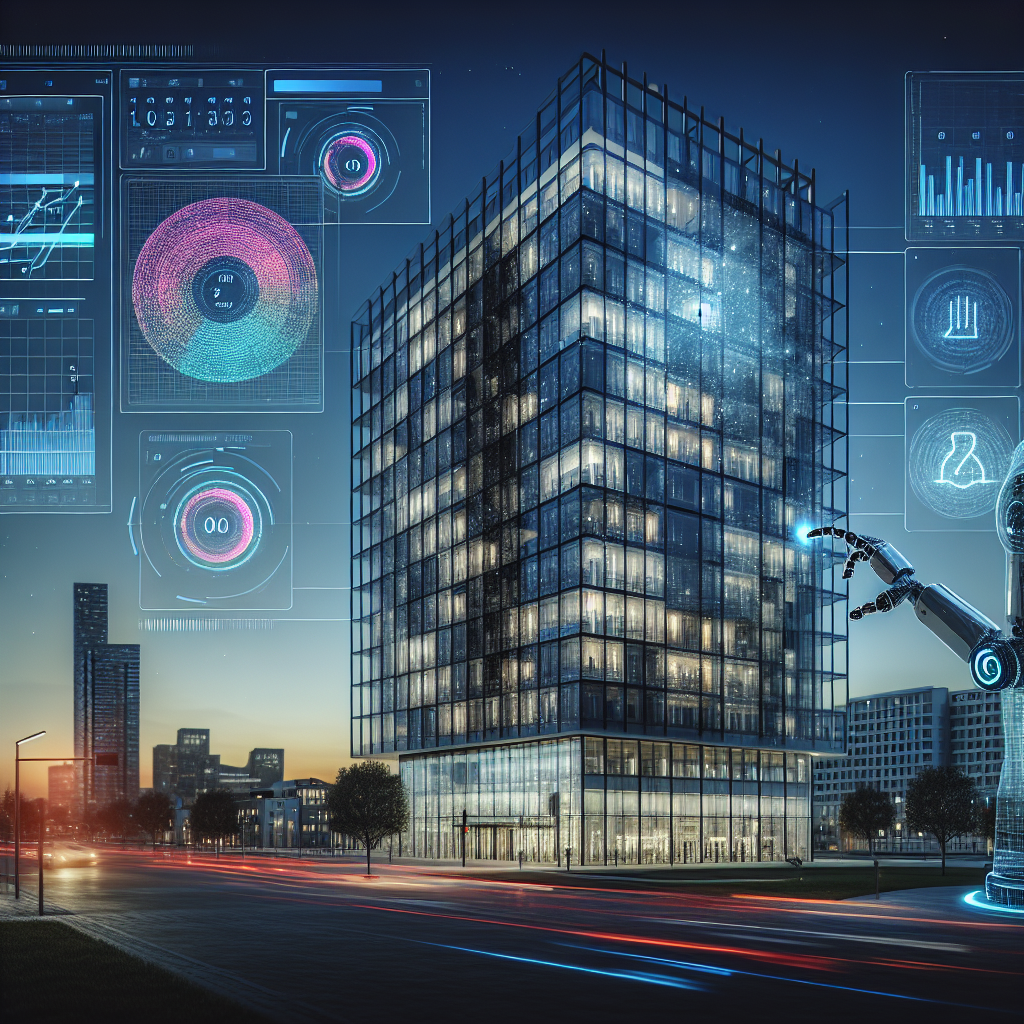In recent years, the adoption of artificial intelligence (AI) in various industries has revolutionized the way businesses operate and make decisions. One area where AI has shown great promise is in real-time building monitoring. Leveraging AI for real-time building monitoring can help property owners, facility managers, and building occupants optimize energy consumption, improve safety and security, and enhance overall building performance.
Real-time building monitoring involves the continuous collection and analysis of data from various sensors and devices installed throughout a building. This data can include information on energy usage, temperature, humidity, occupancy, and more. By using AI algorithms to analyze this data in real-time, building managers can identify patterns, trends, and anomalies that can help them make informed decisions to improve building efficiency and performance.
One of the key benefits of leveraging AI for real-time building monitoring is the ability to detect and address issues before they escalate. For example, AI algorithms can analyze data from sensors to predict equipment failures or maintenance needs, allowing building managers to proactively address these issues before they cause downtime or costly repairs. This predictive maintenance approach can help prolong the lifespan of building systems and reduce maintenance costs in the long run.
AI can also help optimize energy consumption in buildings by identifying opportunities for energy savings. By analyzing data on energy usage patterns, occupancy levels, and environmental conditions, AI algorithms can recommend adjustments to heating, cooling, and lighting systems to minimize energy waste while maintaining occupant comfort. This can lead to significant cost savings for building owners and contribute to reducing the building’s carbon footprint.
Furthermore, AI-powered real-time building monitoring can enhance safety and security in buildings. By analyzing data from security cameras, motion sensors, and access control systems, AI algorithms can detect suspicious activities or unauthorized access in real-time and alert security personnel to take appropriate action. This proactive approach to security can help prevent theft, vandalism, and other security incidents, ensuring the safety of building occupants and assets.
In addition to energy efficiency, safety, and security, AI can also help optimize space utilization in buildings. By analyzing data on occupancy levels, foot traffic patterns, and utilization of different areas within a building, AI algorithms can provide insights into how spaces are being used and recommend adjustments to maximize efficiency. This can help building managers make informed decisions about space planning, layout design, and resource allocation to better meet the needs of occupants and improve overall building performance.
Overall, leveraging AI for real-time building monitoring can provide numerous benefits for property owners, facility managers, and building occupants. From optimizing energy consumption and improving safety and security to enhancing space utilization and overall building performance, AI-powered real-time monitoring offers a comprehensive solution for managing modern buildings more effectively and efficiently.
FAQs:
Q: How does AI-powered real-time building monitoring work?
A: AI-powered real-time building monitoring involves the continuous collection of data from sensors and devices installed throughout a building. This data is then analyzed by AI algorithms in real-time to identify patterns, trends, and anomalies that can help building managers make informed decisions to optimize building performance.
Q: What types of data can be collected and analyzed in real-time building monitoring?
A: Data collected in real-time building monitoring can include information on energy usage, temperature, humidity, occupancy levels, security incidents, and more. By analyzing this data, AI algorithms can provide insights into building operations and recommend adjustments to improve efficiency and performance.
Q: How can AI help optimize energy consumption in buildings?
A: AI algorithms can analyze data on energy usage patterns, occupancy levels, and environmental conditions to recommend adjustments to heating, cooling, and lighting systems. By optimizing energy consumption, building owners can reduce costs and minimize their carbon footprint.
Q: How can AI enhance safety and security in buildings?
A: AI-powered real-time monitoring can analyze data from security cameras, motion sensors, and access control systems to detect suspicious activities or unauthorized access in real-time. This proactive approach to security can help prevent security incidents and ensure the safety of building occupants and assets.
Q: What are the benefits of leveraging AI for real-time building monitoring?
A: The benefits of leveraging AI for real-time building monitoring include improved energy efficiency, enhanced safety and security, optimized space utilization, and overall improved building performance. By analyzing data in real-time, AI algorithms can provide valuable insights to help building managers make informed decisions and optimize building operations.

